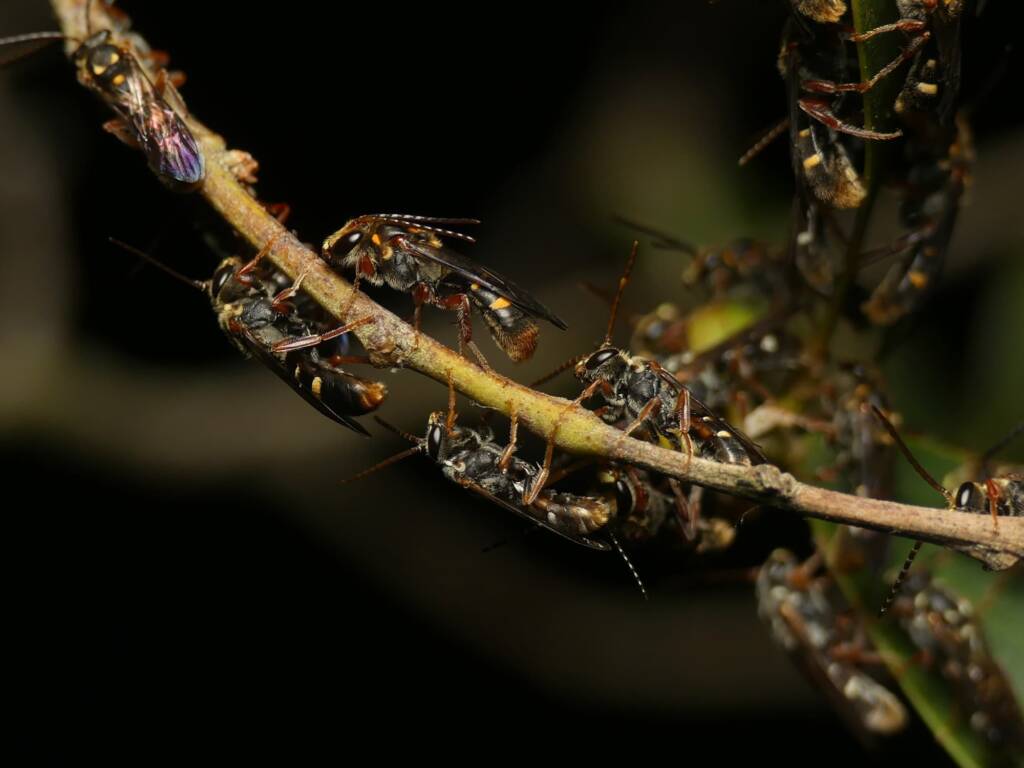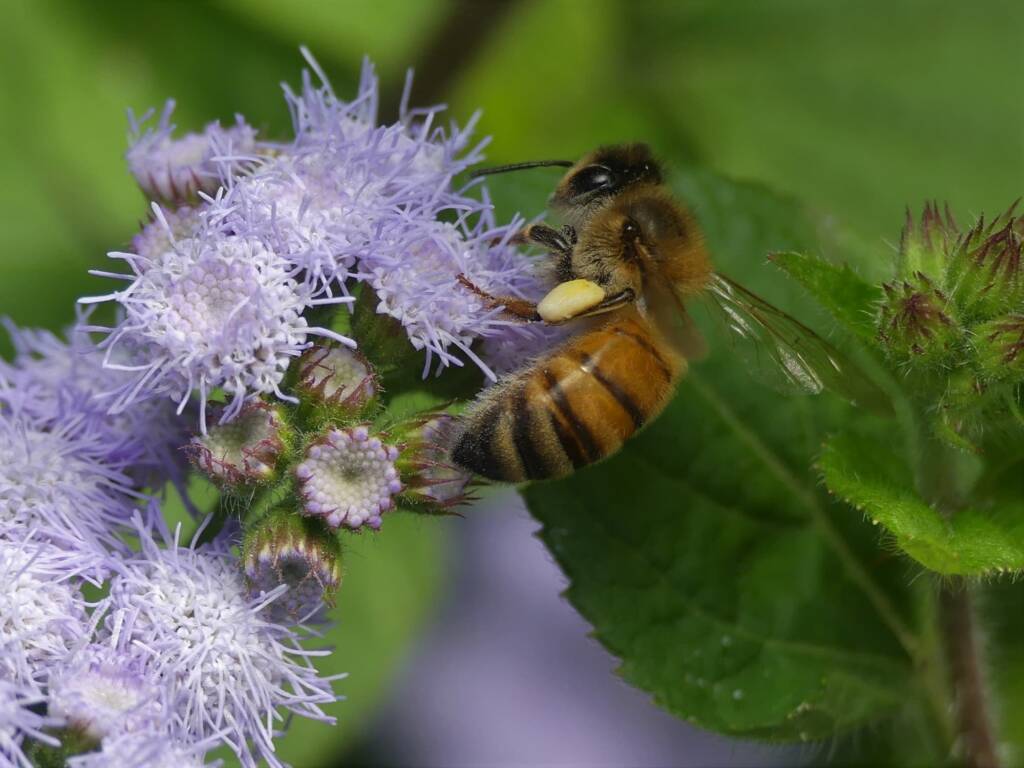Gold Coast BeesNomia Bee (Lipotriches australica)
As well as the European Honey Bee (Apis mellifera), that is ustilised in the agricultural industry for pollination and the production of honey, the Gold Coast is also home to a number of native bees species.
Gold Coast Bees
The European Honey Bee vary in size from 13-16 mm and are usually recognised by the yellow and black abdominal banding and fine visible hairs all over the body. Their antennae are slightly longer than their head and they have light brown to transparent wings with dark veins. There may be some slight variation in colour, depending on the age of the bee (worker bees can lose their hairs over time) and also feral honey bees can be slightly darker in colour — some information on our page Dark Apis mellifera.
Most of us would be able to identify the European Honey Bee, but if you are not sure, following are some images of the European Honey Bee.
Native Bees
Like other insects includings wasps and beetles, the Australian native bees are an important pollinator of many flowering plants.
Many local native bee species are varied in size and colour, as well as some preferring specific genus/species of plants.


- Scientific classification
- Kingdom: Animalia
- Phylum: Arthropoda
- Class: Insecta
- Order: Hymenoptera
- (unranked): Unicalcarida
- Suborder: Apocrita
- Superfamily: Apoidea
- Clade: Anthophila
- Families:
- Andrenidae
- Apidae
- Colletidae
- Halictidae
- Megachilidae
- Melittidae
- Stenotritidae
- Synonyms: Apiformes (from Latin ‘apis’)
Footnote & References
- Photographs © Stefan Jones
- Formicidae, Ants, Atlas of Living Australia, https://bie.ala.org.au/species/https://biodiversity.org.au/afd/taxa/e6b0febe-65c1-4119-9199-90bb593b458d
Gold Coast BeesNomia Bee (Lipotriches australica)
Gold Coast InsectsAntlions, Lacewings, and Allies (Neuroptera) Ants Bees Beetles Bugs (Hemiptera & Heteroptera) Buterflies & Moths Flies (Diptera) Wasps
QueenslandGold Coast Region Lamington National Park Southern Downs QLD





